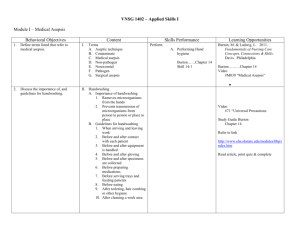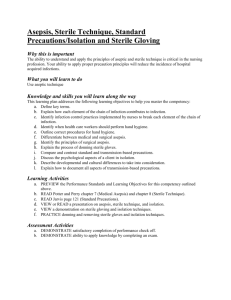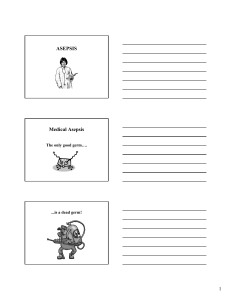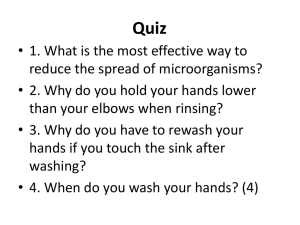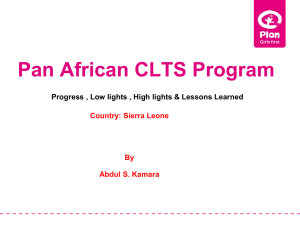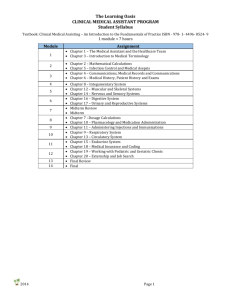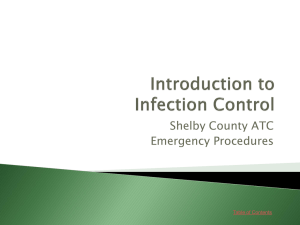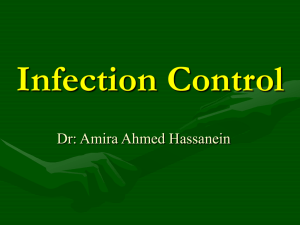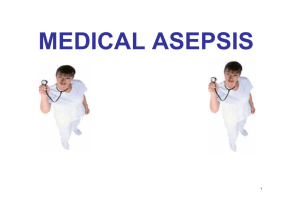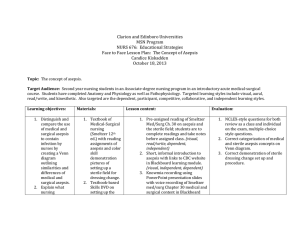Medical Asepsis Principles
advertisement
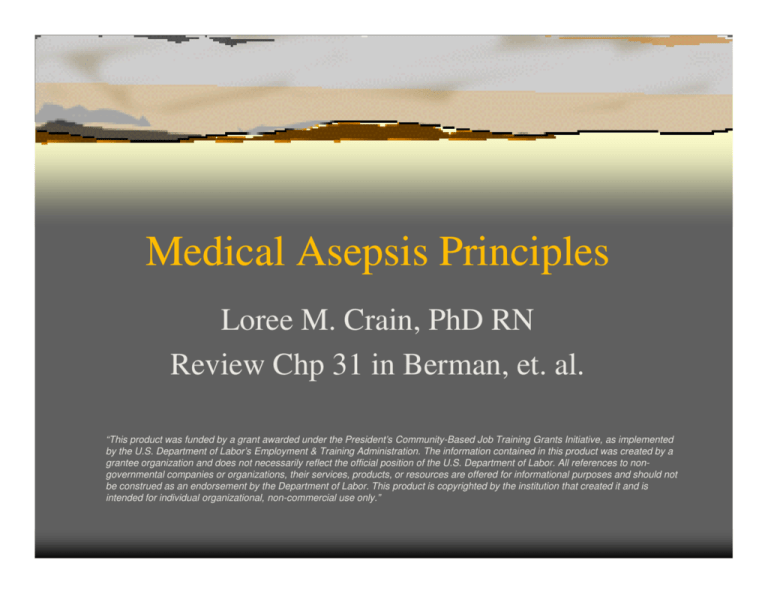
Medical Asepsis Principles Loree M. Crain, PhD RN Review Chp 31 in Berman, et. al. “This product was funded by a grant awarded under the President’s Community-Based Job Training Grants Initiative, as implemented by the U.S. Department of Labor’s Employment & Training Administration. The information contained in this product was created by a grantee organization and does not necessarily reflect the official position of the U.S. Department of Labor. All references to nongovernmental companies or organizations, their services, products, or resources are offered for informational purposes and should not be construed as an endorsement by the Department of Labor. This product is copyrighted by the institution that created it and is intended for individual organizational, non-commercial use only.” Disease Producing • Pathogenic microorganisms or pathogens Do Not Cause Disease Nonpathogens Some normal body flora – E coli (if it stays in the GI tract) Prevention of Spread of Microorganisms Medical asepsis Occurs in absence of pathogens Surgical asepsis Occurs in absence of all organisms Medical Asepsis Often referred to as “clean Technique” Used in all aspects of client care Begins before client present Jewelry – only wedding band and small earring Hair off collar and under control Fingernails short and in good repair Linen rooms/carts = clean, thus linen from clts rooms can not be returned Utility rooms = cleaned and dirty Cross contamination must be avoided by not placing articles in the wrong areas Linens and articles = carried away from your uniform and not held close to body Articles dropped on floor = contaminated and must be discarded, including linens Clts wear slippers or shoes when out of bed Clts have own supplies and equipment If you are not feeling will = do not go to work Paper tissue is used for clt secretions – discard in trash basket Equipment in cleaned and rinsed in cold water to remove secretions before returning to central supply (heat coagulates substances and makes it more difficult to remove Soap and water best cleansers – break down soil so it can be more readily removed Detergents more effective in hard or cold water – could damage boy tissues Germicides increase effectiveness of cleansing agent Hand washing Single most effective medical aseptic practice down when first arrive at the nursing unit and before beginning nursing practice Soap and rinse hands twice before taking care of clt Wash before all procedures In between clts Antibacterial gels used between clients if hands are not dirty Gloves Clean , non sterile are used when touching blood, body fluids, secretions, excretions,m and contaminated items Discard immediately after using Wash hands after removal of gloves Surgical Asepsis Sterile technique
